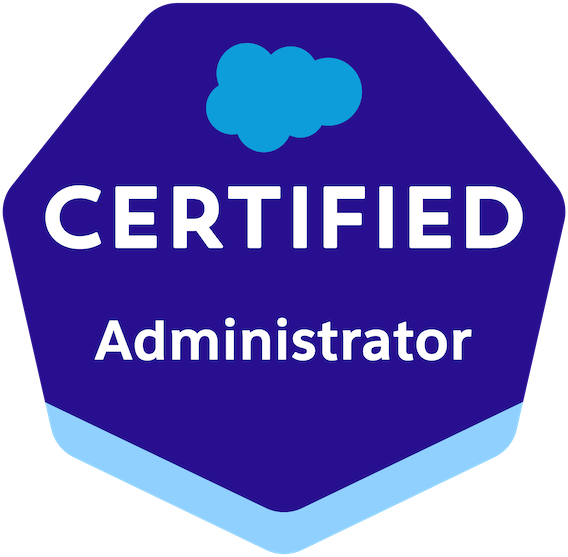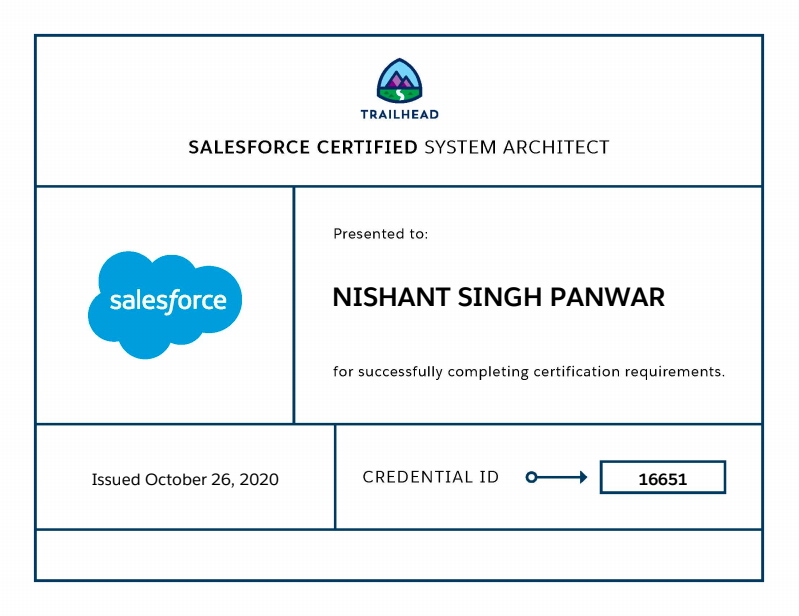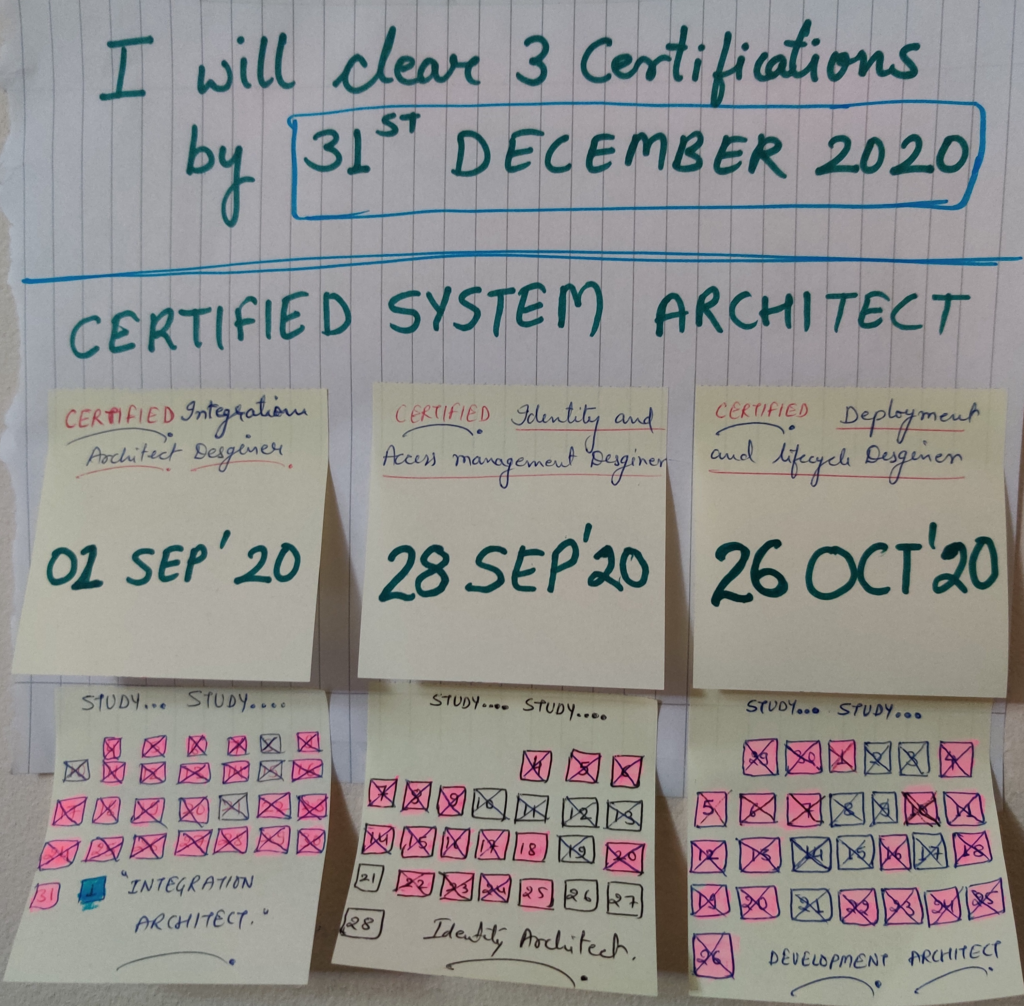In this blog, we will take a journey for someone who wants to start his/her career in salesforce and look forward to achieving their first milestone “Salesforce Administrator Certification”
All the recommendations in this blog are my own and not influenced or provided by Salesforce. You can feel free to modify or pick a different approach based on your study style.
Overview
Salesforce Administrator is a person who understands the out-of-the-box (OOTB) features of the Salesforce platform and what configuration options are available to meet the common business requirement. Read more details in the Exam Guide but on a high level, the following points should be noted.
- Questions – 60 + 5 Random unevaluated
- Time – 1 Hr 45 Min
- Pass Score – 65% (42 out of 65)
- Result – Immediately
- Closed Book Exam
- Fee – $200 and $100 for retake
Developer-oriented certifications like App Builder, and Platform Developer I, don’t require Admin certification as a prerequisite but for everyone starting fresh, I recommend going for admin certification first. Admin Certification preparation gives you a great understanding of the Salesforce platform and what can be achieved out of the box without any development.
Preparation
Timeline
For someone new to salesforce and aspiring to learn Salesforce and appear for this certification, I recommend at least 4 months study plan.
- Introduce – 2 Weeks – Understand what is Salesforce and how to navigate to various configuration setups and learn about the capabilities of the platform.
- Indulge – 4 Weeks – Go deep into various topics and explore various configuration areas of Salesforce and how to leverage them.
- Refine – 6 Weeks – At this point, you are very familiar with Salesforce and now you should start to accumulate your learnings from the Admin Certification’s point of view. The following trailmix includes various superbadges to get deep knowledge of the topic as well as modules arranged based on the exam content.
- Revise – 4 Weeks – Now it’s time to recollect all the knowledge and prepare your mind for your certification exam.
- Things to do before your exam hyperlink to a later point in this blog
Strategy
Understand the exam break up and divide the topics which should be given more priority and topics which just need to be memorized and understood from a high level.
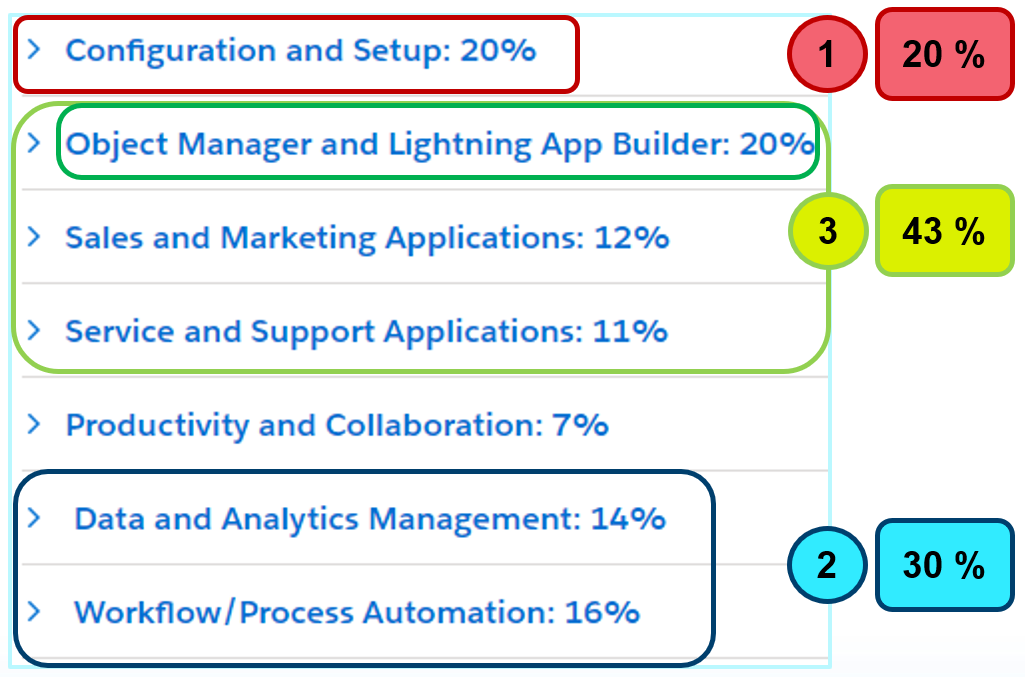
These three areas are the focus topics that should be understood in detail as most of the questions will be scenario-based or will require complete understanding to pick the best answer.
Priority 1 – User Setup and Security [20%]
This is the core of salesforce and will be an important concept throughout your salesforce journey. Understand this thoroughly and go even a little beyond the scope of the certification exam, like high-level knowledge of territory management, teams for sharing, etc.
You can refer to this session on YouTube in which we discussed this topic at 9:40.
Priority 2 – Data Management, Analytics, and Automation [30%]
This is also a very important area of salesforce which is present in most of the certifications like App Builder and Consultant Exams. Data Management and Analytics are also core responsibilities of a Salesforce Admin. You would be maintaining the data in the Salesforce system when it requires bulk processing and cannot be done one at a time and generate reports for leadership from time to time to see the company’s growth and progress.
You can refer to this session on YouTube in which we discussed these topics
- 2nd Session at 12:45 – Data Management & Analytics.
- 3rd Session at 12:25 – Process Automation
Priority 3 – Standard and Custom Objects & Out of the Box (OOTB) CRM application – [43%]
In this part, you are expected to understand what salesforce provides out of the box (powerful CRM application) and where would you need to introduce custom objects or additional attributes in the standard object to meet a business requirement. Overall in your salesforce journey as an admin, developer, consultant, or architect, organizations expect you to always leverage the vanilla salesforce features to meet any requirement before stepping into the customization zone.
You can refer to this session on YouTube in which we discussed this topic at 12:40.
This is a vast topic and you should invest sufficient time exploring all the standard objects and how they are interrelated and what functionality is provided by salesforce.
The bare minima you should understand are the following objects and their relationship. Account, Contact, Lead, Campaign, Opportunity, Case. Additionally, you must be aware of objects like Product, Pricebook, and Order.
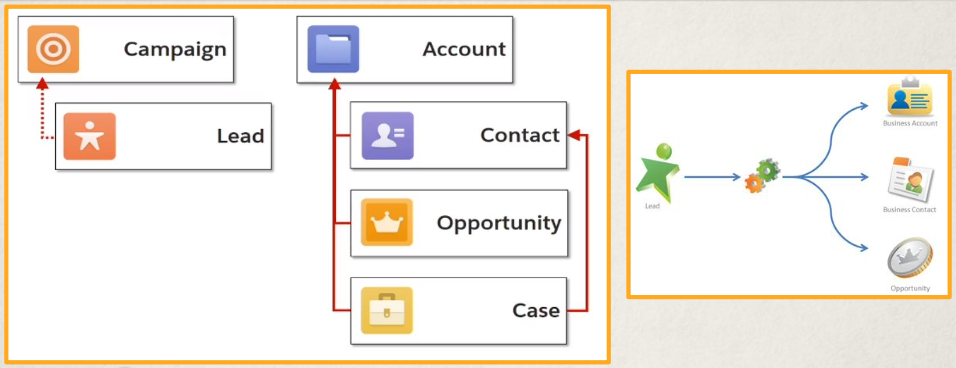
I have covered both areas, Sales and Marketing Applications, and Service and Support Applications in our session and you can watch that session recording on YouTube.
Priority 4 – Low Hanging Fruits [7%]
We are keeping the other topics on low priority but the questions from these topics are simple and straightforward. You should understand the basics of these topics and when we can leverage these features.
Following are the topics that will definitely have 1 to 2 questions each
- AppExchange. Documentation
- Chatter. Help Article
- Activity Object. Help Article
- History Tracking and Feed Tracking. Help Article
- Organization and Personal Currency. Help Article
- Forecast and Fiscal years. Help Artice
- Use of locale, language and timezone settings. Help Article
Learn and keep them in your recent memory in the last month so that you can answer quickly. These topics will cover you in the scenarios where you hit a wrong answer in the major topics.
You can refer to this session on YouTube in which we discussed this topic at 1:37:54.
Before Your Exam
This is a very important phase and you should first schedule your exam after a month and start this phase and revise everything you learned in the last 3-4 months.
- Schedule your Certification Days Webinar – This is a 5-hour webinar happening every month. Schedule this a month in advance as it gets full very quickly and keep the session date 1-2 weeks before your exam date.
- Trailhead Study Trailmix 2Hr 30Min – This will act as a knowledge check for you and give you confidence in your preparation and revise the concepts. It also has some sample questions to give you an idea about how questions are framed in the real exam. Don’t fall prey to dumps!
- Mock Exams – There are various options to look for mock exams some of them are paid and some are free and you can optionally go for some of these to assess your knowledge before the exam.
Important Tips and References
Practice everything in a Hands-on org as much as you can!
Create a Trailhead Playground and see everything, setup menu and how to configure different settings and practice them as that will go deep in your memory and you will be able to recollect better during the exam.
Other Tips
- Multiple Answers – There are some questions with multiple answers and only the correct combination will be considered right. In such questions look for absolute wrong options to rule them out and then look for the correct ones. In some scenarios, the options when performed in a sequence also make it a correct answer so look for such a pattern too.
- Review Flag – Use the review flag wisely and mark the question where you are not sure about the answers and give them extra time later and keep moving.
- Time per question – You have approx. 95 seconds per question so try to not spend more than one minute per question initially and use the time later. Some questions will be easy enough to answer in 10 seconds.
- Details of Q&A – Read all the fine details of the question and answers and don’t jump to a conclusion quickly. If it is a lengthy question read it twice to get more clarity, there will be a few keywords that will determine the best option. There might be two correct answers but due to a specific keyword in question, one of the options will be more optimal and correct in that situation/scenario.
References
Join Chatter Groups
- Letterkenny Developers’ Chatter Group – Access the presentation files and notifications of all our upcoming sessions.
- ADM 201 Study Group – Global study group for all the admin certification aspirants.
- Certification Days – Q&A and any technical help with the Certification Days preparation webinar I mentioned above.
- Salesforce Admins Live Sessions – Links to all the new webinars hosted for admins.
- Admin Trailblazers – All the Admin Trailblazer community, where people post their challenges and advice while performing day-to-day responsibilities as salesforce admin.
Listen to your fellow Trailblazers’ Experience
In our Letterkenny Developers Group, we ran a Salesforce Academy with the above plan and two of them cleared their certification, and listen to their journey and experience in this video at 1:10:34.
Trailhead Live Videos
- Import Wizard
- Data Loader
- Data Export and Backup
- Report Types and Report Formats
- Report Charts
- Dashboard and Scheduling
- Escalation Rules
- Sharing Rules, Teams, and Manual Sharing
Google spreadsheet with links to more such videos
Find additional such videos on Trailhead Live
Help Articles
Conclusion
Salesforce is a very powerful platform and the number one CRM company. Starting your journey in Salesforce itself makes you ahead of the curve and getting a certification will be definitely an extra edge.
Salesforce Administrator Certification is not a simple certification and requires a very good understanding of the platform and its OOTB features. Read More
Focus on the topics which require greater understanding first like Security, Data Management, and Vanilla Salesforce as most of the questions are scenario-based. Read More
Keep a solid revision plan for at least one month and focus on Certification Days webinar, Mock Exams, and Trailhead. Read More
Collaborate while studying and keep an eye on the important tips for your exam. Read More
All the very best and let me know if this post helped you in your preparation. Feel free to share your feedback to improve this post.

